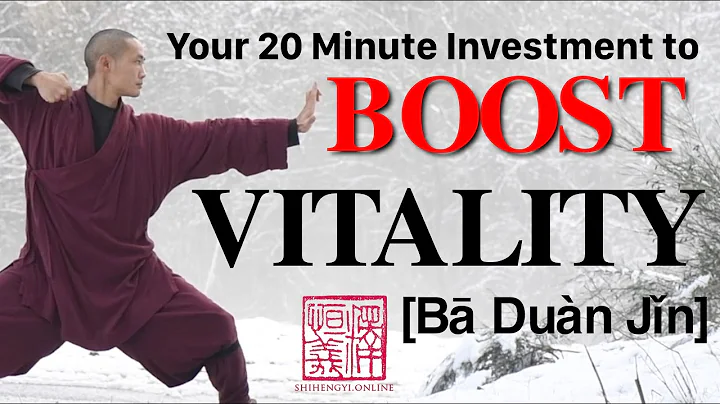In "In the Light of Yoga", Master Iyengar wrote about the importance of shoulderstand. He wrote: "Shoulderstand is the mother of asanas." This position can flush lymph nodes, help regulate blood pressure and heart rate, strengthen the diaphragm, and stretch the chest muscles.

The potential dangers and taboos of shoulderstand
The benefits of shoulderstand are undoubted, but it should be noted that if the shoulders are applied to the neck or cervical spine in shoulderstands Excessive pressure, which may cause injury.
Note that head/shoulder inverted three-dimensional exercises are not suitable for the following situations: back injury, headache, heart disease, high blood pressure, menstrual period and neck injury.

can think of it this way: Most of us can stick our chin to our chest without feeling discomfort or injury. However, this posture can be dangerous when you are in a bent neck position and then increase the weight of your entire body.
The key to staying safe is to keep your weight on the acromion and the back of your upper arm when you put your shoulders, hips and legs upright.
Let’s first understand the neck anatomy
Cervical vertebrae, which refers to the cervical vertebrae, located below the head and above the thoracic vertebrae. Located in the cervical segment of the spine, there are 7 pieces in total, surrounding the cervical spinal cord and its spinal membrane. Connected by the intervertebral disc and ligaments, it forms a forward convex physiological curve

The first atlas (C1), it has the greatest flexion and extension activity, it is with the skull ( The range of motion between the occipital bones is about 5 degrees. Coupled with the range of motion of the lower vertebrae of C1 (C2 to C7), each vertebra bends and extends approximately 1o degrees, and you will see how the neck actually moves.
Although this kind of mobility is very good when we are sitting or standing, because we only put the weight of the head on the neck, but think about shoulderstand, the whole weight of the body is completely placed on the curved neck. You will see how to strain the intervertebral ligaments of the neck. More importantly, a sudden slip or fall may cause the neck to exceed its normal range of motion and cause injury.

The technique to keep most of the weight of the shoulder (and below the cervical spine) is to make the shoulder flexible and open. If the shoulder flexors and adductors are tight, you will not be able to stretch your arms comfortably behind you. This will cause your spine to round, your chest will collapse, and your weight will be pushed into the back of your neck.

So to prepare for shoulderstand, you must first open the chest and front shoulders, including the pectoralis, anterior deltoid, brachii (long and slender shoulder muscles) and biceps muscle. In this way, your arms can be stretched back more fully during shoulder standing, so that your hands and elbows can support your body like doorstops.
Now let’s talk about the assistive devices in shoulderstand
First of all, let’s talk about blankets. Many yoga teachers recommend using blankets to protect the necks of the inverted part. In fact, this can also increase the pressure of the lower cervical spine, because it can focus the flexion of the cervical spine on the C5 and C6 vertebrae, and in the C5 and C6 vertebrae, they are located on the back of the shoulder. If the shoulders, hips, and legs cannot be stacked vertically, the weight will be concentrated on the cervical ligament from C5 to the first vertebra of the thoracic vertebra (T1), while the vertebrae of C4 and higher hanging over the edge of the blanket will cause unnatural bending . To correct this problem, many practitioners move their shoulders closer to the edge of the blanket. However, this can increase the possibility of slipping and suddenly increase your weight to a fully curved cervical spine.
Solution

Support the shoulders, but do not overbend T5 to C5. Try to use two folded blankets stacked on both sides of the spine (as shown in the picture above) to support the shoulders. This creates a channel for the cervical spine and maintains the natural curvature of the neck. Or use a chair that supports your lower back and legs for exercises, which can reduce the pressure on the cervical spine.

Avoiding injury is very important for practice, but too much worry can also lead to a fearful mentality, and even miss beneficial posture training. Rather than abandon postures like shoulderstand, it is better to explore the subsequent preparation postures to make the final posture more structurally reasonable.
So how do you prepare to enter shoulderstand safely? You can do the following 4 preparatory poses
1, cow face pose
This arm position can stretch the shoulder flexors before practicing.

▪ Sit up, press the back of your left hand into your back for 5 seconds, and then gently move your hands closer to each other to deepen the stretch.
▪ Hold here for 30 seconds. Alternating hands, repeat a total of 3
2, anti-plate variant
This pose stretches the shoulder flexors and pectoral muscles

Starting from a sitting position, place your hands 12 inches behind you and point your fingers toward your hips.
▪ Slightly bend the elbow to protect the wrist. When you feel a tension in your chest, fix your hands on the mat and try to drag it toward your hips equidistantly.
▪ Hold for 30 seconds; exit for 30 seconds. Repeat three times.
3, bridge
This posture increases the flexibility and strength of the thoracic spine.

▪ By pressing the feet into the mat from the back of the foot and trying to pull them apart, make the thighs parallel.
▪ Then, press in your feet to lift your hips, hold your breath twice, and then droop. Carry out 2 sets, each with 10 repetitions.
4, Shoulderstand (assistance exercise)

▪ This alternative method can feel the full benefits of shoulderstand, but it can rely on weight On the chair, not against the cervical spine.
▪ Set up the blanket as shown in the picture (or use a folded blanket under each shoulder). Support your weight on the edge of the chair against the wall. If you feel comfortable, you can stretch your hands under the chair to grab the back legs, or extend your arms to the sides to increase your shoulder openness.
▪ To exit, please lean your feet against the wall, lift your pelvis from the chair, move the chair to the side, and then put it down.
Like all yoga asanas, know it and know why; safe practice, open the body step by step to establish awareness, perceive every breath, don’t force it.
Remember: Enter carefully, this is the best gift you can give your body.
Breeze Project Health Truth Officer





















